Originally published on SoundStage! Xperience
 I think I like reviewing headphones and mobile audio gear more than I do full-size hi-fi components. The thrill of unboxing a new set of speakers retreats pretty quickly once the outriggers are hooked up, minute adjustments are made to toe-in angles, and the speaker cables are attached. But you live with a pair of headphones. You touch them, grab them, adjust them, and, most important, wear them -- they’re almost as much a fashion accessory as a watch or a pair of eyeglasses. Top-quality appearance and sound are necessary but not sufficient. The quality, durability, and comfort of the materials, the feel of the controls, become much more meaningful when they’re part of a device you physically interact with multiple times a day. A loudspeaker merely shouts at you from a distance.
I think I like reviewing headphones and mobile audio gear more than I do full-size hi-fi components. The thrill of unboxing a new set of speakers retreats pretty quickly once the outriggers are hooked up, minute adjustments are made to toe-in angles, and the speaker cables are attached. But you live with a pair of headphones. You touch them, grab them, adjust them, and, most important, wear them -- they’re almost as much a fashion accessory as a watch or a pair of eyeglasses. Top-quality appearance and sound are necessary but not sufficient. The quality, durability, and comfort of the materials, the feel of the controls, become much more meaningful when they’re part of a device you physically interact with multiple times a day. A loudspeaker merely shouts at you from a distance.
I thought about this while reviewing Oppo Digital’s HA-2 headphone DAC-amplifier ($299 USD). From the moment I unboxed the HA-2, I took note of the thoughtful industrial-design decisions that clearly informed its development. I appreciated the positioning of the buttons, the subtle illumination of the six LEDs, the resistance of the volume dial, and how extraordinarily good it was at a few carefully chosen tasks. Competing products offer greater functionality, additional wattage, and longer battery life, and I suspect a few offer better sound. Despite that, none could hold a candle to the HA-2.
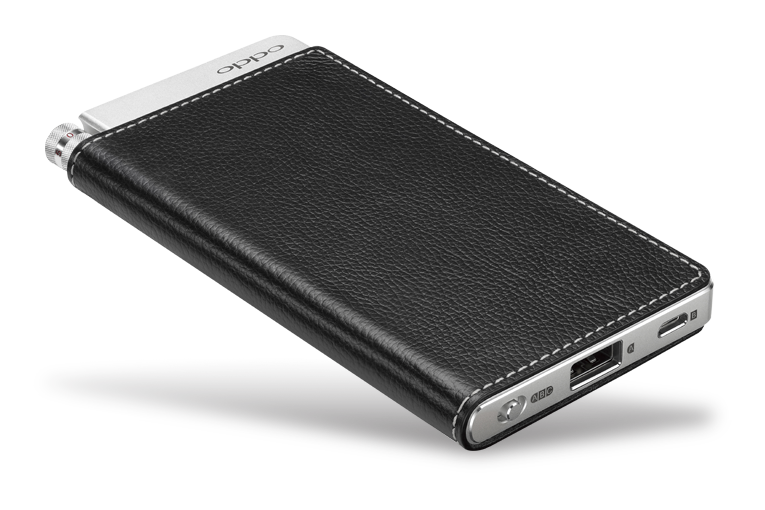
An inexpensive suit; a hell of a tailor
I’d love to buy a pint for whoever at Oppo led the HA-2 project. A portable headphone DAC-amplifier can look like almost anything, so I think it hardly a coincidence that the HA-2’s footprint is almost identical to that of my Apple iPhone 6. At 5.4”L x 2.7”W x 0.5”D and weighing 6.2 ounces, the HA-2 is svelte yet feels solid. To say it looks and feels good for the price would be an injustice. It’s just plain good, without qualification. Its perfectly fitting black sheath of genuine leather is soft with white stitching, and offers simple yet elegant contrast with the HA-2’s lines. The HA-2’s edges are chamfered, and buffed to a shiny, reflective finish. Even the cutout for the volume dial is rounded to complement the dial’s curve, as opposed to a squared-off edge. (I assume the latter would be less expensive to make.)
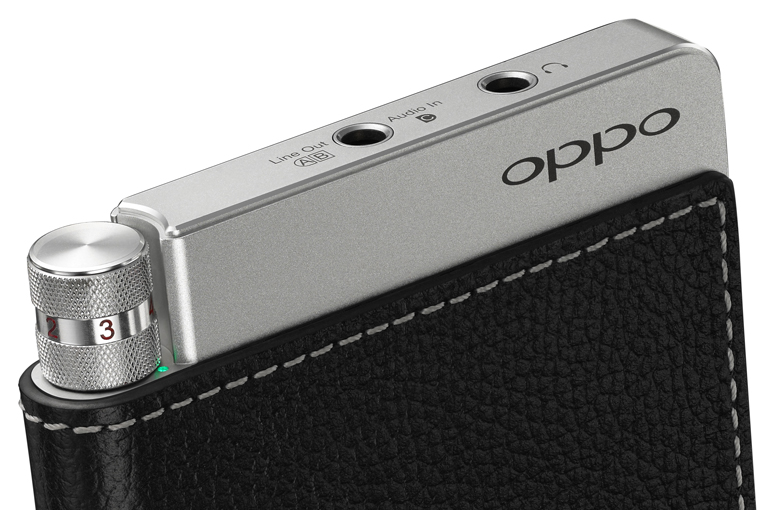
It was the same when I began to operate the HA-2. Its volume dial offered a good amount of resistance: enough not to feel cheap, but not so much as to make one-handed use difficult. The side-mounted buttons for Bass + (boost) and Gain (Low, High) look as if appropriated from an iPhone 5S assembly line, with a firm snick-snick engagement. The rounded Battery/Charge button had a similarly firm action, with no give. Only the three-position (A, B, C) Input button on the base had any kind of play, but even that was minor. The single top-mounted and the five side-mounted LEDs have a subtle, nonblinding glow. Everything is exceedingly well executed, every tolerance considered and adequately looked after. If ever a portable audio product was fit to appear in an issue of GQ, the HA-2 is it.
The HA-2 is no less impressive in its specifications. Its ESS Sabre ES9018K2M DAC chip is the mobile cousin of Sabre’s fairly ubiquitous 32-bit, eight-channel ES9018 Reference chipset, which is found in a multitude of audiophile-grade DACs -- such as the HA-2’s sibling, the HA-1 desktop headphone DAC-amp ($1199). The HA-2 handles PCM signals up to 32-bit/384kHz, and can process DSD 64/128/256. Its class-AB amplifier produces 300mW into 16 ohms, 220mW into 32 ohms, or 30mW into 300 ohms. Oppo says the output stage comprises “hand-picked and matched parts.” They are also keen to point out that no DSP is used in the HA-2, and that volume control in the digital domain is handled by the Sabre DAC chip and an analog potentiometer. Finally, the output impedance is a claimed 0.5 ohm, which means that the HA-2’s behavior should not substantially change with the type of headphone used. Promising.
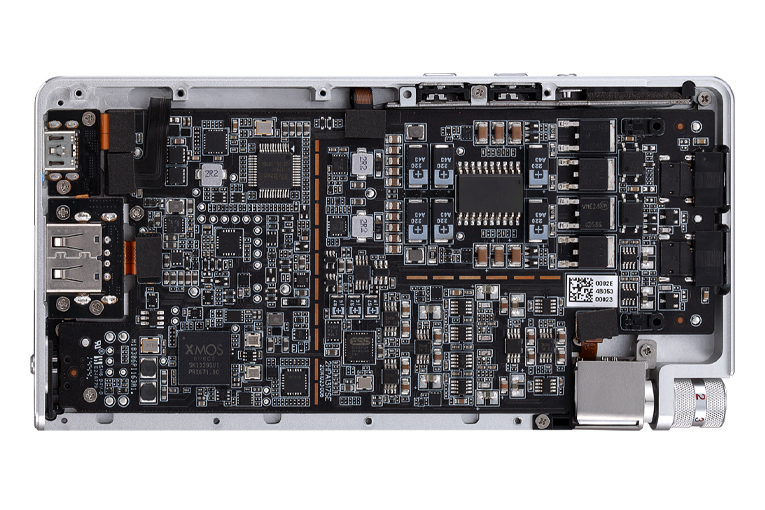
My good feeling about the HA-2 increased as I noted its features. There’s a Type-A, asynchronous USB port on the base (Input A), flanked on one side by the Input selector switch with three positions (A, B, C), and on the other by a Micro-B USB port (Input B). The Micro-B USB port allows the HA-2 to be used as a pure DAC in a stereo system, courtesy a USB-Micro-B-to-USB-Type-A cable, while the full-size USB port permits its use as a headphone DAC-amp for an Apple iDevice, via a supershort USB-Type-A-to-Lightning cable; both cables are included. The Micro-B input is used, via a Micro-B-to-Micro-B cable (included), for connecting to non-Apple smartphones or computers; or, via a Micro-B-to-Type-A cable (included), to charge the HA-2. On the top of the HA-2 are the expected 3.5mm stereo headphone output, and a 3.5mm port that works as a stereo Line Out when either of the USB inputs is active, but turns into the third stereo audio input when Input C is selected, entirely bypassing the internal DAC. Everything is neatly and intuitively labeled -- I never had to consult the User Guide. Oppo also thoughtfully includes two black rubber bands, to secure a smartphone/music player to the HA-2 when you’re on the go.
Of surprising interest to me was the HA-2’s VOOC rapid-charging feature. Its big wall charger can charge the amp’s 3000mAh lithium battery to 70% capacity in 30 minutes, and to 100% in 90 minutes. This rapidity extends to the charging of connected devices as well. When I connected my iPhone 6 to the HA-2 via USB, the Oppo worked as normal. But when I held down the Charge button on the side panel for a few seconds, a single blue LED lit up, signaling that the HA-2 had begun to feed power to my phone in addition to -- not instead of -- delivering a converted and amplified analog signal. Of course, this quickly drains the HA-2’s own battery, but I found that it charged my iPhone noticeably quicker than when I plugged the phone directly into the wall. Holding down Charge again turns this feature off. When the HA-2 is charging another device, its own battery can’t be charged.
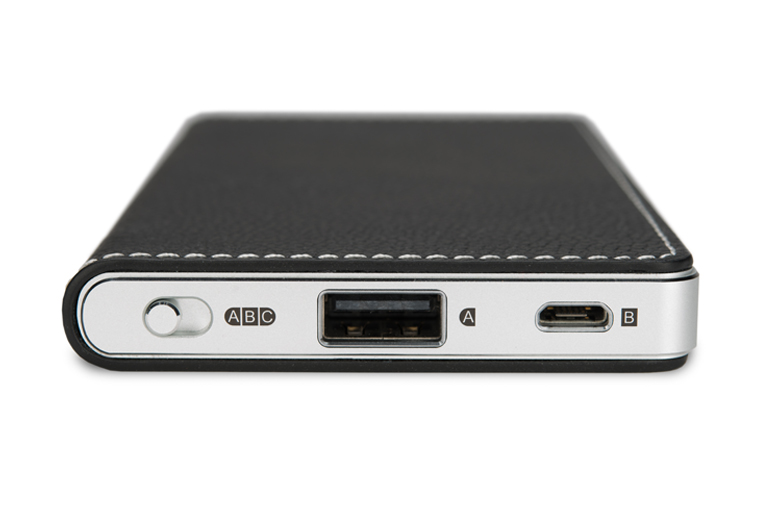
With a full charge, and using the HA-2 solely as a battery charger, I found that it could charge my iPhone 6’s battery from 0% to 70% of capacity in about an hour, and to almost 100% in about two hours, before its own battery was completely drained. Being able to select this feature at will meant that giving my iPhone an emergency charge of about 10% didn’t dramatically erode the HA-2’s use, on a single full charge, of seven hours with digital sources, or 13 hours with analog sources. This is no mere party trick -- I found myself using the HA-2’s rapid-charge feature multiple times a week. Very useful.
Use
I briefly hooked up the Oppo to my system, which currently comprises gear in for review, including Parasound’s Halo integrated amplifier-DAC, via a Crystal Cable Dreamline Plus stereo miniplug-to-RCA cable. Verifying that the Oppo worked as a pure, fixed-line-level DAC, I quickly turned to how I suspect most buyers will use the HA-2: on a desktop and on the go. When I hooked up the HA-2 to my Apple MacBook Pro using Oppo’s included cable, it quickly appeared in the computer’s MIDI setup menu -- though curiously without the option of 32-bit output. The Oppo spent a fair bit of time in that setup; the rest of the time, it was tethered to my iPhone 6.
The HA-2 wasn’t dead silent -- I heard a faint hiss when I plugged in my reference headphones, NAD Viso HP50s, vintage Grado SR125s, PSB’s M4U 4s -- but this was more or less irrelevant unless I was listening at extremely low volumes. All three pairs of ’phones did just fine with the HA-2’s Low gain setting. One quirk: When the HA-2 hadn’t received any signal for 30 seconds, it turned its amplifier section off, presumably to conserve power. This means that resuming play after auto power-down included a pause of one or two seconds before any signal was actually delivered to my headphones.
Sound
The praise I’ve lavished on the Oppo HA-2’s design and build quality would mean nothing were its sound quality disappointing. It wasn’t. The improvements wrought in my laptop’s sound were subtle but many. From Tidal’s website I played “Threnody,” from Goldmund’s beautifully titled The Malady of Elegance (16-bit/44.1kHz FLAC, Type), and was immediately blown away by Keith Kenniff’s (aka Goldmund) closely miked pedalwork, an uncommon thing to hear with such clarity in a solo-piano recording. It gave Kenniff’s performance an intimate but also a human feel, as the bonds among wood, metal, ivory, and living performer could be more easily heard. The dichotomy of the soft, diffuse resonances of the struck strings with the creaking of the pedal box was delightful.
Playing the song again sans Oppo produced largely the same sound, now scrubbed of finer details. The leading and trailing edges of each press of the sustain pedal was slightly obscured, and the chords sounded slightly foggier, less precise. I had to listen closely to hear these differences -- $299 still doesn’t buy you a giant-killer of a portable headphone DAC-amp -- but once I did, I couldn’t ignore them. The HA-2 brought Kenniff’s piano just that much closer into my headphones.
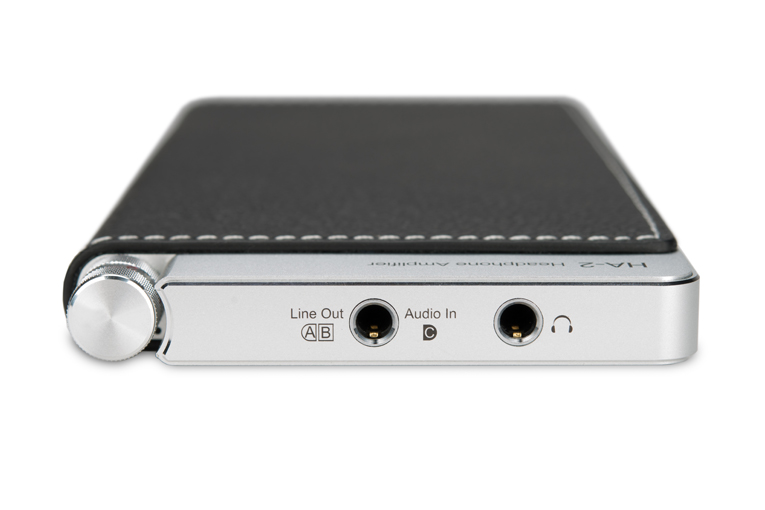
Ólafur Arnalds’s “Verses (after Chopin),” from his and Alice Sara Ott’s The Chopin Project (16/44.1 FLAC, Mercury Classics), is a haunting work performed by a string quintet. The musicians enter singly, painting layer on layer of melancholy on the initial melody. The power of this track should be reserved for the most somber days. The viola’s deliberate entrance was rich in texture and emotive expression. Its interplay with the violins was sublime, as the cello eased in to reinforce the viola’s foundation. Once again, the Oppo tore down a subtle layer of ambiguity between the recording and my NAD headphones that made the quintet’s sound slightly more immediate, with greater precision, more visceral sensations of speed and agility, and a delicacy that made removing the Oppo from the signal chain a problem with recordings of wide, wide dynamic range -- such as “Verses.” Then, the string quintet sounded a bit plodding.
With the Oppo in play, I heard more in the way of microdetail, transparency, and rhythm, but the underlying character of each track never changed. The thing was dead neutral -- which, for the price, is surprising. This meant that when I donned my Grado SR125 headphones, which I bought in high school, their sound character was readily apparent. Yes, their open-back design sounded spacious, but their treble bordered on the bright and edgy. Even the high level of high-frequency background noise in “Verses” was notably more audible through the Grados. This is something to seriously consider when choosing headphones to partner with the HA-2. You don’t want ’phones that pass on or, worse, emphasize the personality of any upstream electronics.
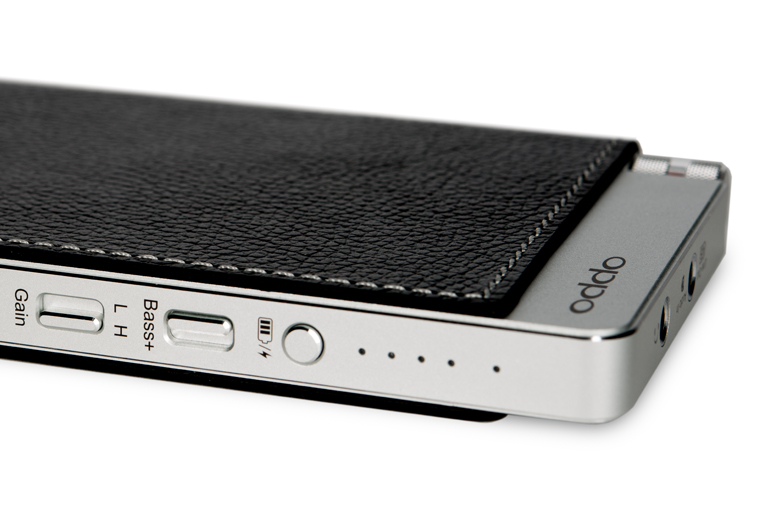
The qualities described above combined to offer a greater sense of imaging focus and soundstage breadth through the HA-2. Like an optician sliding the right corrective lens into place in an eye exam, the aural scene of “I Had This Thing,” from Röyksopp’s The Inevitable End (16/44.1 FLAC, Universal), was rendered in starker relief, and with finer articulation, with the HA-2 in the signal chain. Featured singer Jamie McDermott’s first lines are at the front of the soundstage here, and presented larger than life. Despite his vocal dominating much of the soundstage’s width, the HA-2 gracefully captured the stage’s depth through the reverb on McDermott’s voice, the sound never becoming lively or gravelly. The driving bass line was kept in check, with none of the loose, flabby low-frequency reproduction that mars less powerful designs -- there was impact a-plenty.
As for the Bass button on the HA-2’s side panel, I never found a use for it. Flicking it on seemed to add several dB of output from about 100Hz down, and had the effect of making most tracks sound fat, and some downright lethargic through my NADs and Grados. But I can see this feature coming in handy when the HA-2 is used with inexpensive earbuds.
Comparison
When I compared the Oppo HA-2 ($299) with ADL’s A1 headphone DAC-amplifier ($599), which I reviewed in 2014, it was clear that Oppo hopes to sell the HA-2 to more people than ADL’s target audience of serious audiophiles. The ADL has a 24/192 Cirrus Logic CS4392K chip, and supports up to DSD128 via USB. Its thick, black case, its big, protruding volume dial, and its general lack of style make it look at least a decade older than the Oppo. The A1 barely eclipses the HA-2’s battery life at 7.5 hours, and while it offers an optical input (the HA-2 doesn’t), its 300mW power rating into 16 ohms makes it identically powerful. Moreover, the A1, despite costing twice as much, is not iOS-friendly, can’t serve as a power source, and its thicker plastic case means it’s probably not quite as convenient for use on the go. The ADL and HA-2 offered similar sound quality, but I recall being slightly more taken with the A1’s dynamics and midrange purity. However, in my review I called the A1 a “chameleon” with no inherent sonic personality of its own. The Oppo HA-2 is another.
Hegel Music Systems’ Super ($299) is a pure, bus-driven USB headphone DAC-amp intended to be used only with a computer, and it has a distinct sonic personality. Hegel products tend to have a crystalline treble and upper midrange, which gives their sound a somewhat forward, clean quality. The Super exemplifies this sound -- high-frequency transients sound crisper and sharper than through the HA-2. And the Hegel’s noise floor is even more audible than the HA-2’s. I could hear background noise in quiet passages of studio-recorded music with the Super; with the Oppo, I could hear this noise only when no music was playing. For the same money, the HA-2 is a no-brainer.
Conclusion
Some products I review excite me more than others, but I can’t recall the last time I’ve been so completely enamored of a device as I am of Oppo’s gorgeous little HA-2. It’s incredibly well designed, with the build quality and feel of a modern iPhone, and the style and flair of something that will look at home in any setting. Factor in ruler-flat neutrality, flexibility of use with a wide variety of devices, and a fast-charge feature that you’ll never want to be without, and I can’t think of one area in which the HA-2 comes up short. This little guy doesn’t only deserve a Reviewers’ Choice award -- it’s a piece of hardware that anyone with a half-decent pair of headphones needs to own. An offensively good product.
. . . Hans Wetzel
Associated Equipment
- Headphones and earphones -- Grado SR125, NAD Viso HP50, PSB M4U 4
- Headphone DAC-amplifiers -- ADL A1, Hegel Music Systems Super
- Digital sources -- Apple MacBook Pro running iTunes, iPhone 6
Oppo Digital HA-2 Headphone DAC-Amplifier
Price: $299 USD.
Warranty: One year, limited.
Oppo Digital, Inc.
162 Constitution Drive
Menlo Park, CA 94025
Phone: (650) 961-1118
E-mail:
Website: www.oppodigital.com





